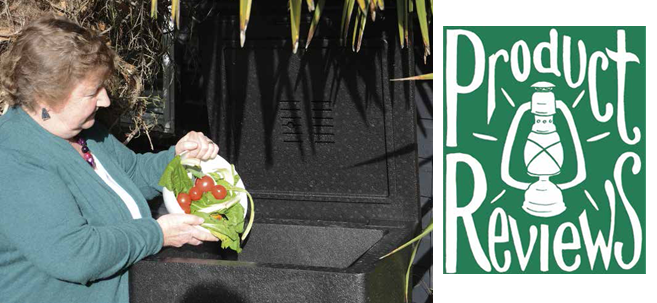Allotment Owners & Hot Composting – Worth it or not?
Many allotment owners reading our blog will already be keen composters. A good few of you will have your own compost recipes and secret additions all aimed at getting top quality homemade ‘black gold’ to help grow your fruit and vegetables.
We hope to answer this question; ‘Is it worth having a go at hot composting on my allotment?’
Now bare with us as it’s a long blog but we hope worth the read for anyone who wants to understand more how a HOTBIN might work on their allotment or just understand a bit more why the HOTBIN is a great way to successfully achieve hot composting at home.
HOT COMPOSTING – WORKING AT 40-60C
We define hot composting as working at 40-60C and we are really looking for the waste to be at this temperature for 3-10 days at a time.
Many of you will occasionally notice your compost is warmer to touch than the soil and occasionally you may see steam (well water condensation) coming of the compost heap. We always suggest a degree of care when using these as indicators as it is quite hard to judge temperature unless you use a temperature gauge.
The following table will help:
| Temperature | Compost | Notes |
| Sub 5C | ‘Frozen’ | No decomposition. Typically your heap will be inactive from October to March – it is little more than a storage bin. |
| 0-20C | Cold | The average temperature over a year in the UK is 10C. Do not get mislead by a steam coming off as an indication the heap is hot – you can see steam on a cold autumn morning when the temperature of the heap is 20-30C |
| 20-40C | Warm | Temperature of the average shower |
| 40-70C | Hot | Temperature of the hot water in your hot radiator. It is very hard to get compost heaps on an allotment to these temperatures (see below). |
Take care to monitor how long your heap stays hot – you may miss that the heat you saw one day has dropped and gone the next. You also need to look at the temperature in the center of the heap as well as the edges to determine how much of the heap is hot.
Why should allotment owners consider hot composting?
Hot composting:
- Kills weed seeds
- Kills plants diseases & pathogens
- Kills deep rooting and spouting stems such as couch grass and dandelion
- Produces compost faster
- Can convert your autumn clear up into compost for spring
- Frees up space for more growing (reduces 4 compost bins to 1)
- Potential for more compost – you can add all food waste to a well designed hot compost bin
- No turning
We have a more comprehensive illustration at the FAQ on hot composting benefits
What do you need to create a Hot Compost Heap?
The basic laws of nature governing the amount of heat produced by bacteria from waste and the heat loss from waste via conduction and convection are fixed and immovable. These laws mean that most compost bins do not retain enough heat to rise above ambient (air temperature) never mind get into the hot composting 40-60C range.
There are two main methods of achieving hot composting; building large compost piles and turning them often (minimum 1m3, more typically 2m3), or using specialist composting bins that are insulated and regulate air flow.
Big heaps – big effort
The total amount of heat per Kg of waste is fixed. If you lose heat fast (e.g. in an open windy swept heap) you need more new waste each day to keep it warm. A big heap has the potential to stay warm as the outer layer of compost acts as insulation to the waste right in the middle. The inner core heats up and turning the waste brings new waste to the centre. Lots of waste is needed to get a heap hot – typically 0.5m3 (or a half full 1X1X1m pallet frame box) and typically another 50Kg of waste a week plus turning once a week is needed to keep it hot. A group of allotment owners may well have the amount of waste but who’s got the muscle to turn this often? The big guys use tractors, on the allotment it’s a fork and your back.
This large scale hot composting system was defined by Sir Howard back in 1930s and it forms the backbone of the ‘New Zealand 3 bin rotation method and most ‘organic’ compost systems.

Thermal composting is the most rapid compost process. When specific rations of nitrogen, carbon, oxygen and water combine, compost pile temperatures can greatly exceed 100 degrees Fahrenheit, according to National Geographic.